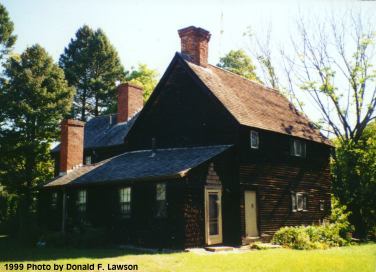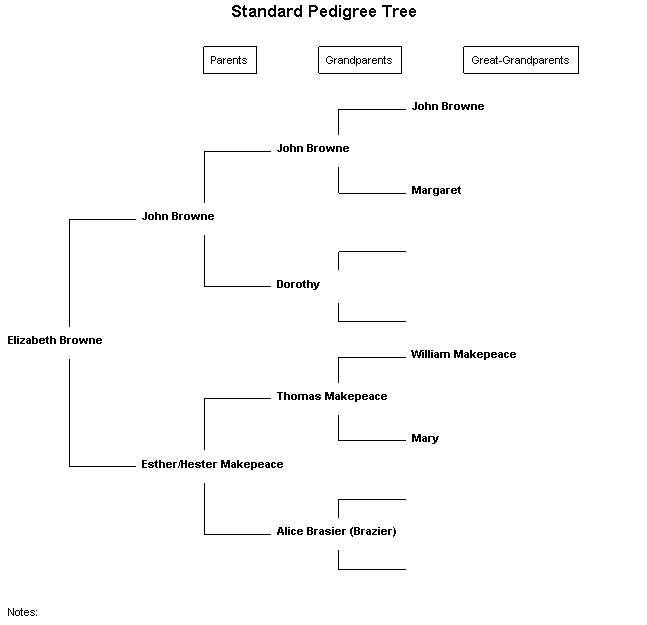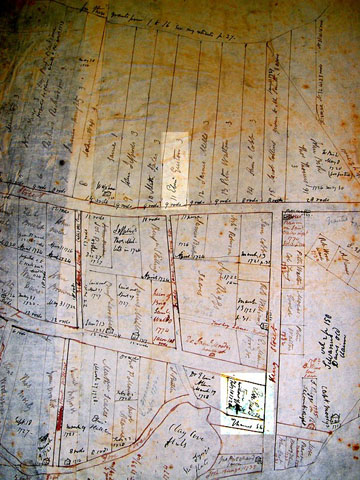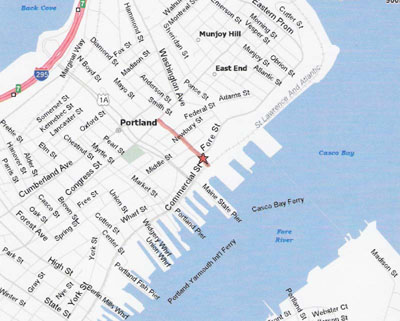|
Browne/Brown Genealogy
| ||||||||||
|
Descendants of John Browne Generation No. 1 1. John1 Browne was born Abt. 1330 in England, and
died in Stamford, County of Lincoln, England. Notes for John Browne: info on Browne family from Henry Bond's "Genealogies of the Families and Descendants of the Early Settlers of Watertown, Massachusetts," 1855, Little, Brown, and Co., Boston, MA; also from James Savage's "Genealogical Dictionary of the First Settlers of New England," Vol. I, reprinted 1998, Bryant, p. 1860-2; Burke's "American Families with British Ancestry," 1983, Genealogical Publishing Co. Inc., Baltimore; etc. from Henry Bond's "Genealogies of the Families and Descendants of the Early Settlers of Watertown, Massachusetts," 1855, Little, Brown, and Co., Boston, MA, p. 116: 'John Browne, of the borough of Stamford, County Lincoln, Esq., Alderman (i.e. Chief Magistrate until the time of Charles II) of Stamford, in 1376 and 1377'; Burke's "American Families with British Ancestry," 1983, Genealogical Publishing Co. Inc., Baltimore, p. 2586: 'The first of whom definite record has been traced in John Browne, of Stamford Co., Lincoln, b. ca. 1330, Alderman of Stamford (i.e. Chief Magistrate of the town, which had no Mayor until the time of Charles II), who purchased from Sir Thomas de Burton, Kt., the Manor of Tolethorpe, in the Parish of Little Casterton, Co., Rutland, which subsequently became the chief seat of the family; had issue, a son [John]...' More About John Browne: Fact 1: Bet. 1376 - 1377, Esquire/alderman/chief magistrate; Fact 2: English nobleman, Borough of Stamford, County of Lincoln (Essex); Fact 3: crest and coat of arms in Bond's p. 117; Child of John Browne is: + 2 i. John2 Browne, born in Stamford, England.
Generation No. 2 2. John2 Browne (John1) was born in Stamford, England. Notes for John Browne: from Burke's "American Families with British Ancestry," 1983, Genealogical Publishing Co. Inc., Baltimore, p. 2586: 'John Browne, of Stamford, the father of...' More About John Browne: Fact 1: in Savage's "Genealogical Dictionary..."; Bond's "Genealogies..."; Child of John Browne is: + 3 i. John3 Browne, born in England; died July 26, 1442 in Stamford, Lincolnshire, England.
Generation No. 3 3. John3 Browne (John2,
John1) was born in England, and died July 26, 1442 in
Stamford, Lincolnshire, England. He married Notes for John Browne: from "Genealogies of the Families and Descendants of the Early Settlers of Watertown, Massachusetts, " by Henry Bond, 1855, Little, Brown and Company, Boston, Massachusetts, p. 116: 'John Brown, of Stamford, Draper, Merchant of the Staple of Calais, Alderman of Stamford in 1414, 1422, and 1427; married Margery, died November 22, 1460, buried in All Saints Church, died July 26, 1442, and buried in the Church of All Saints, which was erected at his expense.' data on Browne family also from RootsWeb's WorldConnect Project: Miller, Callender and Related Families, http://worldconnect.rootsweb.com/cgi-bin/igm.cht?op=get&db=mkmiller&id=12256; also in Savage's "Genealogical Dictionary..."; from Burke's "American Families with British Ancestry," 1983, Genealogical Publishing Co. Inc., Baltimore, p. 2586: 'John Browne of Stamford, Alderman 1414, 1422 and 1427, erected the Church of All Saints, Stamford, which still stands, one of the principal ornaments of the town, and in which he was buried. He d. 26 July, 1442, having had issue by his wife, Margery...'
To the left is a close up view of John Browne's memorial brass in the Church of All Saints, Stamford, England. In the middle is how the couple appears on the church wall. To the right is a closer view of Margery's memorial brass. The Browne family for several generations was involved with All Saints Church in Stamford. Especially in the 1470s & 80s, the Browne brothers, John and William, help reconstruct the church building after the War of the Roses. As was the custom of their times for wealthy benefactors, burial was inside the church--in the floor, often. These brass outlines are life-size and are fitted into the stone above their graves in the interior of the church. Other members of the Browne family are also buried within. More About John Browne: Burial: Church of All Saints (Episcopal), Stamford, England Fact 1: draper; merchant of staples; Alderman 1414-1427; Fact 2: buried in Church of All Saints (Episcopal); erected at his expense; Fact 3: JB and wife buried at upper end of north aisle; plate in wall has dates; Fact 4: steeple built later by son William; Fact 5: All Saints Church is one of principal ornaments of Stamford; Fact 6: buried at the upper end of the north aisle of church; More About Marjery/Marjory: Burial: Church of All Saints (Episcopal), Stamford, England Fact 1: Sons Johne and William rebuilt All Saints Church, Stamford, England;
Children of John Browne and Marjery/Marjory are: + 4 i. John4 Browne, born in England; died Bet. 1462 - 1470 in Stamford, Lincolnshire, England. 5 ii. William Browne. He married Margaret. Notes for William Browne: from Burke's "American Families with British Ancestry," 1983, General Publishing Co. Inc., Baltimore: from "Historical Stamford," http://www.visitoruk.com/stamford/history": 'William Browne [eldest son of John] was the most outstanding member of the family. Leland, writing in the mid-sixteenth century, described him as "a merchant of very wonderfulle richnesse." But he was without a male heir. So, for posterity, he established an almshouse on Broad Street in the mid 1470s as an act of piety and as a token of his concern for the poverty in the town. This elaborate stone building with its sumptuous stained glass chapel, cloister, and courtyard catered for no more than 12 people. He failed to establish the charity officially and it was his brother-in-law, Thomas Stokes, Canon of York, who formally set it up in 1489 after Browne's death. William's death meant that the family business went into the hands of his nephew Christopher...' Left are the life-size memorial brasses for William and wife Margaret in the All Saints Church, Stamford, England.
More About William Browne: Fact 1: helped rebuild All Saints Church, Stamford, Lincolnshire, England; Fact 2: "a merchant of very wonderfulle richnesse"--Leland in mid 1500s; Fact 3: Without a male heir so property went to nephew Christopher; Fact 4: Established almshouse as an act of piety and concern for the poor in Stamford; 6 iii. Alice Browne. She married Mr. Bredmadew.
Views of modern-day Stamford: at left to St. Peter's Hill from the front of All Saints; at right, the outside of church's stained glass window and looking toward Red Lion Square. [The pictures of Stamford and All Saints are courtesy of the web sites netcomuk.co.uk and stamfordchurches.co.uk.] Generation No. 4 4. John4 Browne (John3, John2, John1) was born in England, and died Bet. 1462 - 1470 in Stamford, Lincolnshire, England. He married Agnes/Anne (Laurence?) in England. Notes for John Browne: from Bond's "Genealogies...", p. 116: from Burke's "American Families with British Ancestry," 1983, Genealogical Publishing Co. Inc., Baltimore, p. 2586: John Browne of Stamford, Alderman in 1448, 1453, 1462, d. between 1462, 1470, and was bur. in All Saints church, having had, by his wife Agnes, with other issue, and elder son [Christopher].' from "Historical Stamford," http://www.visitoruk.com/stamford/history": 'The most prominent family in the town were the Brownes, whose lavish brasses still decorate the floor of All Saints' Church. The Brownes were wool merchants and members of the wool staple at Calais; it is possible that the large timber-framed building overlooking Red Lion Square (Nos. 6-7) was the Brownes' wool house. Their wealth and domination of the town was confirmed in stone when they rebuilt most of All Saints Church in the 1470s and 80s. The tower with its soaring pinnacle spire was an elegant match for the old steeple of St. Mary's.
'The present church [All Saints] was built in the 13th century but a church was already on this site at the time of the Domesday Book of 1086. In the 15th century brothers William and John Browne, wealthy wool merchants, rebuilt much of the church that had suffered damage as a result of neglect or by the actions of the Lancastrian armies during the Wars of the Roses.' More About John Browne: Burial: Church of All Saints (Episcopal), Stamford, England Fact 1: draper; Alderman 1448-1462; Fact 2: JB & wife buried in All Saints Church; Fact 3: wealthy wool merchant; Fact 4: helped rebuild church with brother William; Fact 5: church has suffered damage as a result of neglect during Wars of the Roses; Fact 6: parents buried inside church; Fact 7: memorial brasses for Browne family inside on floor; Fact 8: the large timber-framed building overlooking Red Lion Square probably their wool house; More About Agnes: Burial: Church of All Saints (Episcopal), Stamford, England Children of John Browne and Agnes are: + 7 i. Christopher5 Browne, born in prob. East Anglia, England; died in Norfolk, England. 8 ii. John Browne. 9 iii. Edward Browne. 10 iv. Agnes Browne. She married William Waryn. 11 v. Elizabeth Browne. She married William Cook.
Generation No. 5 7. Christopher5 Browne (John4,
John3, John2, John1) was born in
prob. East Anglia, England, and died in Norfolk, England. He married (1)
Grace Pinchbeck, (2)Agnes Bedingfield. He married (3) Elizabeth.
Notes for Christopher Browne: Bond's "Genealogies...": 'Christopher Browne, of Stamford, and of Tolethorpe, County Rutland, married (first) Grace, [from this marriage=Francis], daughter and heir of John Pinchbeck, County Lincoln, Esquire, endowed 20th Edward IV; married (second) Agnes, daughter of ***Bedingfield, County Norfolk. This third wife was Elizabeth." Tolethorpe Hall, pictured right, was purchased in 1977 by the Stamford Shakepeare Company, which refurbished it and now uses it for their headquarters, shops, and visitors center. Productions of "the Bard's" plays are done in the surrounding Victorian gardens. from Burke's "American Families with British Ancestry," 1983, Genealogical Publishing Co. Inc., Baltimore. p. 2586: 'Christopher Browne, of Stamford, Lincoln, and Tolethorpe, Co. Rutland, Sheriff of Rutland 1492, 1500, 1509. He supported Edward IV against Warwick, and in 1480 was granted arms by that monarch, and later assisted Henry VII, fighting with him at Bosworth Field in 1485, for which services Henry VIII issued a patent 6 July, 1527 to his eldest son Francis, authoring him to appear with his head covered in the presence of the King.'
from "Historical Stamford," http://www.visitoruk.com/stamford/history": 'William's death [died without heir] meant that the family business went into the hands of his nephew Christopher...' More About Christopher Browne: Fact 1: Savage's: esquire; will 1516 proved in London Feb. 1518; Fact 2: County of Norfolk, Stamford & Tolethorpe, County of Rutland, Eng.; Notes for Agnes Bedingfield: While there is much speculation among genealogists as to Agnes Bedingfield's dates (born anywhere between 1450 and 1500), there does not seem to be any controversy about her marriage to Christopher Browne--according to Savage's "Genealogical Dictionary..." and others--and their children. Some genealogists have her father as Edmond Bedingfield, born about 1450, in Norfolk, England, and died October 15, 1496, Oxburgh Hall, Norfolk, England. Edmond married Margaret Scott about 1478. She was born about 1453, in Kent, England, and died January 29, 1514, Oxborough/Oxburgh, Norfolk, England. Whatever Agnes's exact parentage was, at least she was a Bedingfield. from booklet published by Henry Bedenfield (Bedingfield/Beddingfield/Bennefield, etc.) resident of family seat Oxburgh Hall, Norfolk County, England: "The Bedingfield family originated in Norman times and it is said that the earliest known ancestor, Ogerus de Pugeys, came over from Normandy at the time of the conquest as one of the four knights of the Lord Malet. This may not be quite true, and in any case no serious claim has ever been made that Ogerus fought at the Battle of Hastings. However, it is certainly known that Ogerus, a latinize form of the Viking name Ogier, did hold land at Bedingfield (near Eye, Suffolk) of Robert Malet, Lord of Eye, who built the castle there and founded Eye Priory. Also there is a village in Normandy called Paugeais, near Thury Harcourt, which could be the same as Pugeys. The earliest known record of the family, a charter made during King William Rufus' [son of William the Conqueror] reign (1087-1100) tell us of Ogerus paying tithe to Robert Malet and as it is a confirmatory charter there must have been an earlier charter giving the same information though since lost. The charter was re-confirmed by King Henry I (1100-1135) to Ogerus' successor Peter de Bedingfield when the manor became part of the Honour of Eye... "The manor of Bedingfield continued to be the chief seat of the family until the inheritance of Tuddenham lands by Sir Edmund in 1476 and when Oxburgh Hall was built. It then became the chief seat, though Bedingfield continued to be owned until relatively modern times by a junior branch of the family." (The Oxburgh/Bedingfield family seat moved only once in their 900 year history and then only 50 miles.) [Today Oxburgh--pronounced Oxboro-- is a part of the National Trust in England. Dowager Lady Agnes Bedingfield gave Oxburgh Hall to Trust in the 1950s to ensure its future preservation. Author and present resident Henry Bedingfield and his family live in selected quarters.] from http://www.users.bigpond.net: "The Bedingfield surname is locality in origin, and can be traced to a single founder of the line. There are a number of derivatives including Bedenfields, Bedingfields, Bennafields, Benefields, or Beddingfields. "The Bedingfields are a very old Catholic family. They are first found in England after 1066 with Ogerus de Pugeys de Bedingfield. Ogerus de Pugeys was a Knight of Lord Malet, Companion to William, the Conqueror... "The Bedingfield/Pugeys are of Norman descent with their forebears settling in Normandy, France along with King Rolo of Norway. Rolo was a Viking leader of the principality of Normandy. The King of France gave Rolo the land of Normandy in an agreement to end the [Vikings'] looting of France and to help the King of France from other Vikings attacking France. One of the Lords of Normandy was William, Lord Malet de Freville. Ogerus de Pugeys was a knight in Lord Malet's court. William the Conqueror was the king [Duke] of Normandy at this time. "In 1066 when William the Conqueror came over to England, Lord Malet and his knights came with him to fight the Anglo-Saxon King [Harold]. Lord Malet was first cousin to the King of England's wife and was apparently entrusted with the guard of Harold's body after he had been slain on the battlefield [!]. After the conquest, William [Malet] was made governor of York Castle and was slain in it defense about 1071. Lord Malet's son Robert possessed at the general survey thirty-two lordships in Yorkshire, three in Essex, one in Hampshire, two in Nofts, eight in Lincolnshire, and 221 in Suffolk. The near kinsman William Malet [2] became Lord of the Honor of Eye in Suffolk. "Because Ogerus de Pugeys
fought bravely alongside Lord Malet, he was given land in Suffolk,
England, in an area known as 'Badyngafelda' [Old English/Anglo-Saxon].
Badyngafelda was a pasture or meadow that was primarily used for the
grazing of sheep. The son of Ogerus was given the duty of caretaker for
the second William Malet of Honor of Eye in Suffolk. Ogerus de Pugeys was
given the title of Sir Knight Ogerus de Pugeys of Badyngafelda. The name
was later changed to de Badyngafelda in recognition of the estate and
manor and the de Pugeys was dropped. The family's first seat was Flemming
Hall (it is now a farmhouse surrounded by a moat). Around the 1300s the de
was dropped and the family became known simply as Bedingfield. "In the fourteenth century the family divided into two branches, one of which established itself at Ditchingham, the other at Oxburgh in the Norfolk, which continues to be the ancestral home. At right is Oxburgh Hall, the family seat of the Bedingfields, as it appears today (from picturesofengland.com). "The family was staunchly Catholic and was well respected during Tudor Times, with Sir Henry Bedingield being made governor of the Tower of London during the reign of the Catholic Queen Mary. He guarded Elizabeth with over 100 men. He was perhaps overly strict with his young charge, but his vigilance was as much for Elizabeth's benefit as for the Queen's. Elizabeth's life was sought by ardent supporters of the Queen, and [she was] hidden away in obscurity. Elizabeth may well have been the successful victim of an assassin. Although Bedingfield's constraints irritated her, Elizabeth certainly appears to have appreciated his efforts, affectionately calling him her 'gaoler' and when she became queen, although she dismissed him from court, she bore him no ill will, and teased him that if she should need to keep someone closely confined, she would summon him. She later visited him at Oxburgh Hall in 1578." [This Henry would have been our Agnes's first or second cousin.] from http://www.freepages.genealogy.rootsweb.com... : "...Peter de Bedingfield [descendant of Ogerus de Pugeys] who died about 1371...apparently fought with the Black Prince at Crecy in France. Peter was a knight and descended from knights... "Peter's son James married Alice Fleming, and they lived in Fleming/Flemming Hall in Bedingfield, Suffolk. The house was built in 1306 and is still standing. It remained in the family until the death of Fleming Augustus OBrien Bedingfield in 1934 at which time it was sold." Children of Christopher Browne and Agnes Bedingfield are: + 12 i. Christopher6 Browne, born in England; died 1538. 13 ii. Edmond Browne. He married Joan Cecil. Notes for Edmond Browne: from Burke's "American Families with British Ancestry," 1983, General Publishing Co. Inc., Baltimore, p. 2586: 'Edmond, m. Joan, dau. by his 2nd wife, of David Cecil, of Stamford, the grandfather of Sir William Cecil (Lord Burleigh), the famous minister of Queen Elizabeth.' 14 iii. Robert Browne. 15 iv. Anne Browne. She married Mr. Gomley. 16 v. George Browne. 17 vi. Katherine Browne. 18 vii. Agnes Browne. Child of Christopher Browne and Grace Pinchbeck is: 19 i. Francis6 Browne [Christopher's eldest son]. Notes: of interest, from Burke's "American Families with British Ancestry," 1983, General Publishing Co. Inc., Baltimore, p. 2586: '[a descendant of Christopher Browne] Robert Browne, known as "the Reformer," who organized the 1st Separatist Church in England at Norwich in 1530. His heirs became extinct in the male line.'
Generation No. 6 12. Christopher6 Browne (Christopher5,
John4, John3, John2,
John1) was born in England, and died 1538. He married Anne.
Notes for Christopher Browne: Bond's "Genealogies...", p. 116: 'Christopher, of Swan Hall, Parish of Hawkedon, married Anne. Will dated May 27, 1531, proved at Bury St. Edmund, July 3, 1538.' from Burke's "American Families with British Ancestry," 1983, Genealogical Publishing Co. Inc., Baltimore, p. 2586: 'Christopher, of Swan Hall, Parish of Hawkedon, Co. Suffolk, which he purchased (will was proved at Bury St. Edmunds, 3 July, 1538) had issue by his wife, Anne, a son.' More About Christopher Browne: Fact 1: Savage's: will dated May 27,1531; proved at Bury Saint Edwards, July 3, 1538; Fact 2: owned Swan Hall, Parish of Hawkedon, County of Suffolk; Children of Christopher Browne and Anne are: + 20 i. Christopher7 Browne, born in England; died 1574 in Swan Hall, Hawkedon, Suffolk, England. 21 ii. Robert Browne. 22 iii. Thomas Browne. 23 iv. Elizabeth Browne. 24 v. Margaret Browne. 25 vi. Agnes Browne.
Generation No. 7 20. Christopher7 Browne (Christopher6, Christopher5, John4, John3, John2, John1) was born in England, and died 1574 in Swan Hall, Hawkedon, Suffolk, England. He married Anne. Notes for Christopher Browne: from Bond's "Genealogies...", p. 49: 'Christopher Browne, of Swan Hall, Will dated November 24, 1568, proved at Bury St. Edmunds, May 31, 1574, Churchwarden, 1564.' from Belle Preston's "Bassett-Preston Ancestors"; 1930, Tuttle, Morehouse and Taylor Co., New Haven Connecticut; p. 49: 'Christopher Browne, died 1574 at Swan Hall, Parish of Hawkedon, Bury St. Edmunds, England.' The map at right shows the village of Hawkedon, red star, and its relationship to Bury St. Edmunds, Stamford, and London. from Burke's "American Families with British Ancestry," 1983, Genealogical Publishing Co. Inc., Baltimore, p. 2586: 'Christopher Browne, will proved at Bury St. Edmunds, 31 May, 1574...' More About Christopher Browne: Fact 1: of Swan Hall, ancient mansion of Browne family, Suffolk, Eng., Parish of Hawkdon; Fact 2: 1 mile north of Hawkdon; still standing in 1852;prob. oldest residence in Suffolk. Fact 3: built of oak and covered with plaster; Fact 4: church warden 1564; Children of Christopher Browne and Anne are: + 26 i. Thomas8 Browne, born 1533 in Swan Hall, Hawkedon, Suffolk, England; died December 23, 1590 in Swan Hall, Hawkedon, Suffolk, England. 27 ii. Robert Browne. He married Anne. More About Robert Browne: Fact 1: buried June 7, 1529; 28 iii. Joan Browne. She married Thomas Baylys.
According to findagrave contributor "Bill G.," this Christopher, his father and grandfather--i.e. the Christophers who died in 1516, 1538, 1574--are buried in the churchyard pictured above: St. Mary's, Hawkedon, St. Edmundsbury Borough, Suffolk, England. Additionally their wives, including Agnes Bedingfield Browne, are also interred at this location.
Generation No. 8 26. Thomas8 Browne (Christopher7, Christopher6, Christopher5, John4, John3, John2, John1) was born 1533 in Swan Hall, Hawkedon, Suffolk, England, and died December 23, 1590 in Swan Hall, Hawkedon, Suffolk, England. He married Joan ?Gabb? December 16, 1559. Notes for Thomas Browne: from "Genealogies of the Families and Descendants of the Early Settlers of Watertown, Massachusetts," by Henry Bond, 1860, p. 120-2: 'The will of Thomas Browne, of Hawkedon is dated Dec. 22, 1590; proved Jan. 26, 1591. He had inherited the Deans and Swans and bequeathed them as follows: 'To Johan, my wife, my house wherein I dwell, with all the outhouses thereto belonginge, called and known by the name of the Deanes & Swanes, with all the lands, meadowe and pasture thereto belonginge, during her naturall life, upon this condicion floowing, viz., that she shall bringe up my children and paye all my debts and kepe my houses in good and sufficient reparacions and make no stripe or waste upon the grounde or of any Wood or Timber growinge in and uppon the same, and after the decease of the saide Johan my wife, I give all the saide howse and howses, lands meadowe and pasture with the apptences to my five sonnes, viz., to John, Richard, Thomas, Ambrose and Abraham, and their heirs, to be equally divided between and amongst them, or so many of them as shall be then livinge, by and at the discression of discrete and wise men to be chosen by the parsons of Hawkedon and Som'ton then beinge,' and bequest in money to his daughter Sarah. Witnesses, Robert Raye, minister of Hawkedon; John Rayner, Richard Gippes, 'and me Peter Cooke, Clarke the writer thereof. 'Hawkedon is 9 miles S.S.W of Bury St. Edmunds. It is probable that the estate was sold in order to be divided among the five sons of Thomas Browne and thus passed out of the possession of that family. 'Swan Hall is about a mile from Hawkedon... It is probably one of the oldest residences in the County of Suffolk, England, being several hundred years old. It is built of oak and covered with plaster, excepting some of the principal beams, which are elaborately carved. The principal part of the building was taken down... The part of the building which remains does not give one any idea of its former extent. 'I found an old lady at Hawkedon who resided at the hall...she remembers that it was precisely like Thurston Hall, which is in the neighborhood and retains all its original features.' from "Bassett-Preston Ancestors," by Belle Preston, 1930. Tuttle, Morehouse and Taylor Co., New Haven, CT, p. 49: 'Thomas Browne of Swan Hall buried December 1590, had wife Joan and five sons.' from Burke's "American Families with British Ancestry," 1983, Genealogical Publishing Co. Inc., Baltimore, p. 2586: 'Thomas Browne of Swan Hall, will proved at Bury St. Edmunds, 26 Jan., 1591, had issue by his wife Joan...' More About Thomas Browne: Fact 1: will dated Dec. 23,1590; proved Bury St. Edwards; Fact 2: born in Swan Hall, Parish of Hawkedon, County of Suffolk; christened in Swan Hall; Children of Thomas Browne and Joan ?Gabb? are: + 29 i. John9 Browne, born in England; died May 1616 in Hawkedon, Suffolk, England. 30 ii. Richard Browne. More About Richard Browne: Fact 1: settled in New England, America; 31 iii. Thomas Browne. More About Thomas Browne: Fact 1: baptized in Summertown, Jan 10, 1580; 32 iv. Ambrose Browne. More About Ambrose Browne: Fact 1: baptized in Summertown, Jan 10, 1580; + 33 v. Abraham Browne. 34 vi. Sarah Browne.
Generation No. 9 29. John9 Browne (Thomas8, Christopher7, Christopher6, Christopher5, John4, John3, John2, John1) was born in England, and died May 1616 in Hawkedon, Suffolk, England. He married Margaret. Notes for John Browne: from Preston's "Bassett-Preston...," p. 49: 'John Browne, who was buried at Hawkedon, May 5, 1616, had wife Margaret, daughter Mary and son John.' More About John Browne: Fact 1: Savage's: buried in Hawkdon/Hawkedon May 5, 1615; Fact 2: church warden 1598; Children of John Browne and Margaret are: + 35 i. John10 Browne, born Abt. 1600 in Hawkedon, Suffolk, England; died July 1636 in Watertown, Middlesex Co., MA, America. 36 ii. Mary Browne, born Abt. 1599. More About Mary Browne: Fact 1: baptized Jne 27, 1599;
33. Abraham9 Browne (Thomas8, Christopher7, Christopher6, Christopher5, John4, John3, John2, John1) He married Lydia. Notes for Abraham Browne: from Burke's "American Families with British Ancestry," 1983, General Publishing Co. Inc., Baltimore, p. 2586: 'Abraham Browne, of Swan Hall, who early attached himself to the Puritan and Separatist movement, and went to America with Winthrop's fleet in 1630, settling at Watertown, Mass. where he was made a freeman. His residence there is now owned and preserved by The Society for the Preservation of New England Antiquities. He was b. 1590, and d. 1650, had by his wife Lydia, with other issue a son,' from Burke's "American Families with British Ancestry," 1983, General
Publishing Co. Inc., Baltimore, p. 2586: More About Abraham Browne: Fact 1: settled in New England, America; Child of Abraham Browne and Lydia is: + 37 i. Jonathan10 Browne, born October 15, 1635; died 1691 in Watertown, MA.
Generation No. 10
Notes for John Browne: from Preston's "Bassett-Preston...," p. 49: 'John Brown was baptized in Hawkedon, England, October 11, 1601. He came in the "Lion," 1632 to Boston and settled in Watertown, Massachusetts. He married Dorothy___. He was buried July 20, 1636, at 36...' from Bond's "Genealogies...," p. 124: 'John Brown, baptized at Hawkedon, October 11, 1601, son of John, elder brother of Richard Browne, arrived in the "Lion," September 16, 1632; settled in Watertown; was admitted freeman September 3, 1634, and was buried June 20, 1636, age 36. By wife Dorothy, he had 1. Hannah, born September 8, 1634. 2. Mary, born March 24, 1635-6. His widow was probably the widow Browne, mentioned in the Town Records, December 4, 1648. If, however, Abraham Browne died previous to this date, this might have been his widow.' from Savage's "Genealogical...": 'Only the names of Hannah and Mary appear on the Watertown records as John was born in England.' from Abram English Brown's "History of the Town of Bedford, Middlesex County, Massachusetts from its Earliest Settlement ot the Year of Our Lord 1891"; published by author, p. 6: 'There were three early settlers of Watertown by the name of Brown, and thought to have been of the same family, viz., Richard, Abraham, and John. The records of Boston show that there was an Edmund Brown, Proprietor, of Boston, as early as 1647; and according to a land suit, 1682. Edmund was nephew to Abraham and brother to John, of Watertown, and a son of John, of Hawkedon, England. Robert Brown, a near relative of John, was a reformer and founder of the denomination of independants called originally Brownists, and now represented in church organization and government by the various denominations of Congregationalists.' from www.stamfordonline.co.uk: "John immigrated to Watertown, MA, aboard the ship 'Lion.' He was accompanied by wife Dorothy and first son John as well as uncles Abraham, Richard and their cousin Robert Browne of Tolethorpe Hall, Rutland. Abraham helped found Watertown, MA, where his name is on a monument to the early pioneers. His cousin Edward, son of Robert Browne was one of the twenty gentlemen founders of Maryland under Lord Baltimore. "Richard, ruling elder of the Watertown Church, led a protest of 'no taxation without representation' against the colony's own rulers. It was echoed by the revolutionary colonists of Massachusetts in the next century. "Abraham's grandson, also Abraham, built the Abraham Browne House at Watertown in 1695. He copied the home built by his grandfather at Watertown, later destroyed by fire. One of the oldest houses in the United States preserved and open to the public, it displays window panes and a fireplace brick pattern similar to those in the remaining wing of the 16th century Swan Hall, the former Browne home in Hawkedon, Suffolk. "About this time, the American branch of the family dropped the final letter in the family name and it became simple 'Brown'." More About John Browne: Fact 1: Savage's: married in England; baptized Oct. 11, 1601; Fact 2: immigrated to Watertown, MA, Sept. 16, 1632, aboard the "Lion"; Children of John Browne and Dorothy are: + 38 i. John11 Browne, born 1631 in Hawkedon, Suffolk, England; died November 20, 1697 in Watertown, Middlesex, MA, New England. 39 ii. Hannah Browne, born September 08, 1634. More About Hannah Browne: Fact 1: born in America 40 iii. Mary Browne, born March 24, 1636. More About Mary Browne: Fact 1: born in America
37. Jonathan10 Browne (Abraham9, Thomas8, Christopher7, Christopher6, Christopher5, John4, John3, John2, John1) was born October 15, 1635, and died 1691 in Watertown, MA. He married Mary Shattuck, daughter of William Shattuck. Notes for Jonathan Browne: from Burke's "American Families with British Ancestry," 1983, General Publishing Co. Inc., Baltimore, p. 2586: 'Jonathan Browne, of Watertown, Mass. b. 15 Oct. 1635, m. 11 dec. 1661, Mary dau. of William Shattuck, of Watertown, and d. 1692' Child of Jonathan Browne and Mary Shattuck is: + 41 i. Abraham11 Browne, born August 26, 1671; died November 27, 1729.
Generation No. 11
Notes for John Browne: While some Browne/Brown genealogists have argued against this ancestry for the John Brown who married Elizabeth Makepeace, I subscribe to the majority of published {hardcopy, not internet} material which gives his ancestry as I have presented. from Savage's "Genealogical...": 'Only the names of Hannah and Mary [John's sisters] appear on the Watertown records as John was born in England.' from Preston's "Bassett-Preston...," pp. 49-50: 'John Brown was born in England in 1631, came to Boston, 1632, and lived in Cambridge, Marlborough, 1666; Falmouth, 1678; and later in Watertown, Massachusetts. He married, April 24, 1655, Esther Makepeace, who was born in England, daughter of Thomas Makepeace. John Brown was called a Scotchman. His will, dated November 20, 1697, mentions his wife Esther, his children John, Thomas, Daniel, Joseph, Deborah, wife of Jeremiah Meachem, and sons-in-law JOHN GUSTIN, John Adams, Thomas Darby and John Hartshorne. He died in Watertown, about 1697.' from Gustine Courson Weaver's "Gustin Compendium," 1929, Powell and White, Cincinnati, Ohio, p. 29: 'John Browne of Cambridge and Watertown, Massachusetts, born 1631, and married Esther Makepeace April 24, 1655, Son of John Browne, born 1601, wife Dorothy, who came to American in 1632, in the ship "Lion" and settled at Watertown.' from "Immigrant Ancestors," Virkus, p. 16: 'John Browne, called a Scotsman, born 1631 at Hawkedon, Eng., emigrated to MA from ENG in Sept. 1631 (1yr. old child) with his parents aboard the ship 'Lyon,' died 20 Nov. 1697 at Watertown, MA...' from NEGHR, Vol. II, 1857, Early Records of Boston Mass., p. 200: "John Browne was married to Esther Makepeace, the daughter of Thomas Makepeace of Boston... by Capt. Hum. Atharton 24 May, 1655..."; also listed in "Boston Births, Deaths, Baptisms, Marriages, and Deaths," Appleton, p. 52; from "Stamford Shakespeare Company," http://www.stamfordshakespeare.co.uk: 'Descendants of the Tolethorpe Browne family from Suffolk were among the early settlers arriving aboard Winthrop's Fleet in 1630 to settle the Massachusetts Bay Colony, now Boston. 'Robert Browne's cousin from Swan Hall in Suffolk, Abraham Browne, and his older brother, Richard, were aboard. Their nephew John, and his wife Dorothy, arrived with their first child, one year-old John, aboard the "Lion." Abraham had helped to found Watertown, Massachusetts, where his name is on a monument to the early pioneers. His cousin, Edward, the son of Robert Towne of Tolethorpe, was one of the twenty gentlemen founders of Maryland under Lord Baltimore. 'Richard, ruling elder of the Watertown Church, led a protest of "no taxation without representation" against the Colony's own rulers. It was echoed by the revolutionary colonists of Massachusetts in the next century.
'About this time, the American branch of the family dropped the final letter in the family name and it became simple "Brown." 'The activities of later members of the family are remembered. Solomon Brown of Lexington, Massachusetts fired the first shot that drew British blood on the Lexington Green in the skirmish starting the revolution which led to independence from the British crown. His first cousin, John Brown of Lexington, was one of the six "Minute Men" killed on the green by the British on the morning of April 19, 1775. His name appears there on the war's first monument. 'Solomon's brother, artillery officer, Captain Oliver Brown, led the pulling down of the equestrian statue of George III the next year in New York City...' More About John Browne: Fact 1: Savage's; born in England; immigrated at 1 year with parents; Fact 2: 1678, sold farm at Marlboro to Thomas Rice; Fact 3: will dated at Watertown, Nov. 20, 1697 naming wife, sons, daughter, sons-in-law Fact 4: then moved to Watertown, MA; Fact 5: moved to Falmouth (now Portsmouth) ME; Fact 6: moved from Cambridge to Marlboro about 1663, staying there until 1678 when they moved to East Deereing, Falmouth.; More About Esther/Hester Makepeace: Fact 1: married by Capt. Humphery Atharton; Fact 2: survived husband and in 1699 deeded property to their son Joseph; Children of John Browne and Esther/Hester Makepeace are: + 42 i. Elizabeth12 Browne, born March 26, 1657 in Cambridge, Middlesex Co., MA; died July 03, 1720 in Falmouth, (now Portland), Cumberland Co., ME. 43 ii. Joseph Browne, born February 08, 1656 in Cambridge, MA; died September 24, 1671. More About Joseph Browne: Fact 1: killed by cart; 44 iii. Sarah Browne, born July 18, 1661. 45 iv. Mary Browne, born December 19, 1662. 46 v. John Browne, born November 27, 1664. 47 vi. Esther Browne, born 1667. 48 vii. Thomas Browne, born 1669. 49 viii. Daniel Browne, born 1671. 50 ix. Deborah Browne, born 1673. 51 x. Abigail Browne, born March 1675. 52 xi. Joseph Browne, born 1677. 53 xii. Ruth Browne, born 1668.
41. Abraham11 Browne (Jonathan10, Abraham9, Thomas8, Christopher7, Christopher6, Christopher5, John4, John3, John2, John1) was born August 26, 1671, and died November 27, 1729. He married Mary Hyde, daughter of Job Hyde. Notes for Abraham Browne: from Burke's "American Families with British Ancestry," 1983, General Publishing Co. Inc., Baltimore, p. 2586: 'Capt. Abraham Browne of Watertown, Capt. of Militia, Town Treasurer, Assessor 1705-8, Selectman, 1721-6, Innholder 1709-12, Town Clerk 1709-12...' Child of Abraham Browne and Mary Hyde is: 54 i. John12 Browne, born April 19, 1705. Notes for John Browne: from Burke's "American Families with British Ancestry," 1983, General Publishing Co. Inc., Baltimore, p. 2586: 'Capt. John Browne of Waltham, Mass, Selectman and Representative...m. Hannah dau. of John Bemis and widow John Flagg, and died 1784 leaving issue.'
Generation No. 12
42. Elizabeth12 Browne (John11, John10, John9, Thomas8, Christopher7, Christopher6, Christopher5, John4, John3, John2, John1) was born March 26, 1657 in Cambridge, Middlesex Co., MA, and died July 03, 1720 in Falmouth, (now Portland), Cumberland Co., ME. She married Augustine LeRossignol Jean/John January 10, 1678 in Marboro, Middlesex Co., MA, son of Edmond Gustine and Esther Le Rossingnol. He was born January 09, 1647 in Le Tacq, St. Ouens, Isle Of Jersey, Channel Islands, and died July 03, 1719 in Falmouth, (now Portland), Cumberland Co., ME.
For a continuation of this Brown-Gustin family, go to the Gustin genealogy page.
|
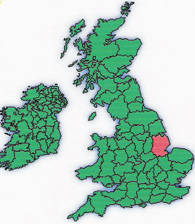
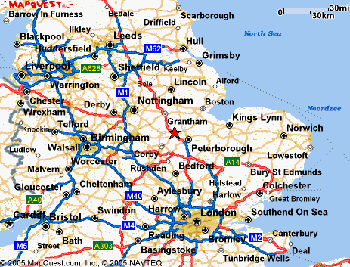
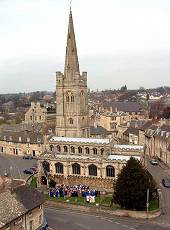 Marjery/Marjory in England. She died 1460.
Marjery/Marjory in England. She died 1460.
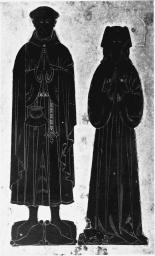


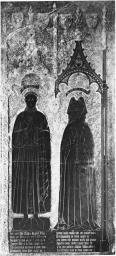 'William of Stamford,
Alderman, 1435, 1444, 1449, 1460, 1466, 1470, Sheriff of Co. Rutland 1467,
1475, 1483, 1486, and probably of Co. Lincoln in 1478, built steeple of
All Saints Church and founded Browne's Hospital in Stamford, an
institution which is still flourishing, m. Margaret, dau. of John Stoke,
of Warmington and d. 1489, leaving issue, an only daughter.'
'William of Stamford,
Alderman, 1435, 1444, 1449, 1460, 1466, 1470, Sheriff of Co. Rutland 1467,
1475, 1483, 1486, and probably of Co. Lincoln in 1478, built steeple of
All Saints Church and founded Browne's Hospital in Stamford, an
institution which is still flourishing, m. Margaret, dau. of John Stoke,
of Warmington and d. 1489, leaving issue, an only daughter.'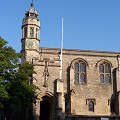
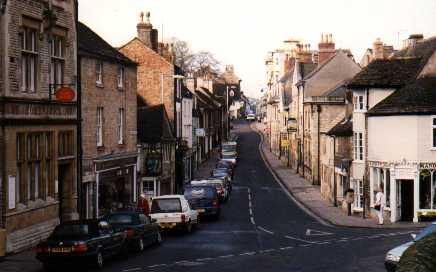
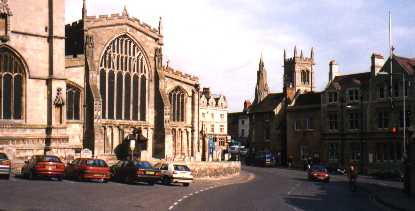
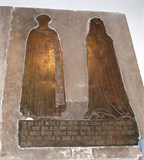 'John Browne, of
Stamford, Draper, married Agnes, died in 1470, then a widow, buried by the
side of her husband. Alderman in 1448, 1453, and 1462; died between 1462
and 1470; buried in All Saints Church.'
'John Browne, of
Stamford, Draper, married Agnes, died in 1470, then a widow, buried by the
side of her husband. Alderman in 1448, 1453, and 1462; died between 1462
and 1470; buried in All Saints Church.'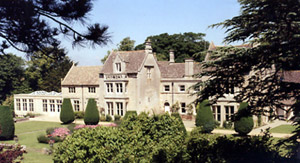
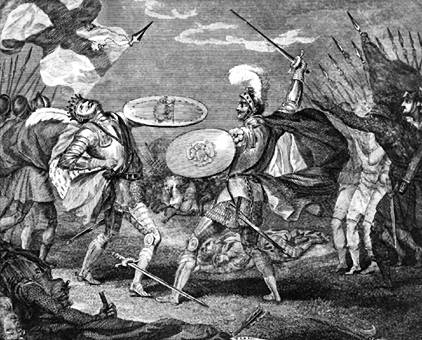
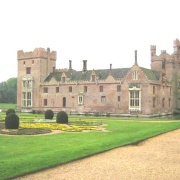
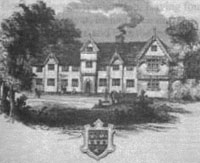

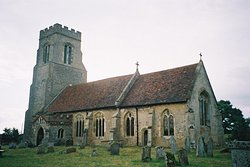
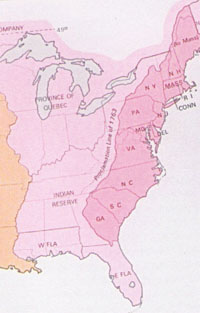 35. John10 Browne
(John9, Thomas8, Christopher7,
Christopher6, Christopher5, John4,
John3, John2, John1) was born Abt.
1600 in Hawkedon, Suffolk, England, and died July 1636 in Watertown,
Middlesex Co., MA, America. He married Dorothy June 20, 1636. She was born
1603 in Hawkedon, Suffolk, England, and died January 27, 1673 in
Watertown, MA.
35. John10 Browne
(John9, Thomas8, Christopher7,
Christopher6, Christopher5, John4,
John3, John2, John1) was born Abt.
1600 in Hawkedon, Suffolk, England, and died July 1636 in Watertown,
Middlesex Co., MA, America. He married Dorothy June 20, 1636. She was born
1603 in Hawkedon, Suffolk, England, and died January 27, 1673 in
Watertown, MA. 38. John11 Browne
(John10, John9, Thomas8,
Christopher7, Christopher6, Christopher5,
John4, John3, John2,
John1) was born 1631 in Hawkedon, Suffolk, England, and
died November 20, 1697 in Watertown, Middlesex, MA, New England. He
married Esther/Hester Makepeace February 24, 1655 in Boston, Suffolk, MA,
daughter of Thomas Makepeace and Alice (Brazier). She was born July 21,
1634 in Bristol, Somerset, England, and died Aft. 1699 in Middlesex Co.,
MA.
38. John11 Browne
(John10, John9, Thomas8,
Christopher7, Christopher6, Christopher5,
John4, John3, John2,
John1) was born 1631 in Hawkedon, Suffolk, England, and
died November 20, 1697 in Watertown, Middlesex, MA, New England. He
married Esther/Hester Makepeace February 24, 1655 in Boston, Suffolk, MA,
daughter of Thomas Makepeace and Alice (Brazier). She was born July 21,
1634 in Bristol, Somerset, England, and died Aft. 1699 in Middlesex Co.,
MA.